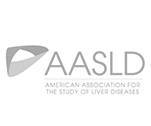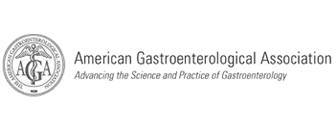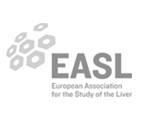Capsule Endoscopy
What is a Small Bowel Capsule Endoscopy?
Small Bowel Capsule Endoscopy allows your doctor to examine the three parts of your small bowel. Previously, the small bowel has been difficult to examine in its entirety and has required endoscopy to be performed with surgery.
The gastroenterologist uses a vitamin pill sized video capsule as an endoscope, which has its own camera and light source. While the capsule travels through your intestine, images are sent to the data recorder that is worn on a belt around your waist for 8 hours. Most patients find the procedure quite comfortable. When the study is finished, the doctor will view the images on a video monitor.
Why is Small Bowel Capsule Endoscopy Performed?
Small bowel capsule endoscopy is currently rebatable in Australia for iron deficiency anaemia when an endoscopy and colonoscopy has not diagnosed the cause, recurrent gastrointestinal bleeding causing anaemia, and for second yearly surveillance of Peutz-Jegher syndrome. It has also been used for investigation of Crohn's disease and other polyposis conditions
What happens during Small Bowel Capsule Endoscopy?
You will fast for 8 hours prior to the examination. On arrival, you will be required to complete paperwork and pay an equipment hire fee.
A registered nurse will take you through to speak to the gastroenterologist, who will discuss the capsule endoscopy and complete the consent process with you.
A data recorder will be fitted on a waist belt.
You will then be asked to swallow the capsule with a glass or two of water. Do not be afraid of swallowing the capsule. It is no larger than a mouthful of food that you swallow. The capsule then passes naturally through your intestines whilst transmitting pictures to the data recorder.
You will be asked to return to the Centre 11/2 hours later to check the position of the capsule. We may need to administer I.V. Maxolon if the capsule has not passed into the small bowel.
Two hours after swallowing the capsule, you will be able to drink clear fluids (water, black tea, black coffee, soft drink, clear apple juice, clear soup and jelly other than red jelly) and take regular medications.
Four hours after swallowing the capsule you can eat and drink normally.
The belt and data recorder are worn for eight to ten hours. You will then return to have the belt removed and the images processed. The capsule will pass naturally through your intestine and be excreted.
Results
The images recorded by the capsule and the data recorder are downloaded and reviewed by the gastroenterologist who will send a report to your local doctor about the findings of the procedure.
Accuracy
A small bowel capsule endoscopy is a very accurate way to assess problems within the small bowel- duodenum, jejunum and ileum. However, as the capsule is moved along by the body's natural contractility (peristalsis), lesions can be missed during this procedure.
Alternatives to Small Bowel Capsule Endoscopy
- CT Enterography : this study involves the placement of a nasogastric tube with contrast injection through this tube and a CT scan. The study will reveal evidence of blockages in the intestine but does not reveal small bleeding lesions.
- Barium follow-through : X-rays are taken following the swallowing of barium. Like CT enterography this test reveals blockages but does not reveal small bleeding lesions.
- Enteroscopy : this involves the passage of a longer endoscope sometimes with a balloon, through the small intestine. This will often only reach the first 1 to 1.5 metres of intestine, therefore less than 50% of the length of the small bowel is examined. This study requires sedation.
Risks of Small Bowel Capsule Endoscopy
No treatment or procedure is completely risk free. Complications are rare and include:
- Capsule retention requiring abdominal surgery. There is a small risk of the capsule getting stuck in the bowel if there is a narrowing If the capsule does get stuck, a surgical operation would be required to remove it.
- Inability to swallow the capsule or lodgement of the capsule in the stomach, requiring endoscopic insertion. There is also a risk if the capsule is unable to be swallowed or does not move from the stomach, that an endoscopy would need to be performed to insert the capsule in the correct position. This would require an admission and sedation and therefore a responsible adult would be required to transport and care for you following the procedure. An additional hospital fee would also apply.
- Incomplete examination. Infrequently the capsule does not complete its passage through the small intestine before the capsules batteries fail. This may require in a repeat small bowel capsule endoscopy to be performed at a later date.
Preparation for Small Bowel Capsule Endoscopy
The day prior to your test
The day prior to your test
Breakfast: you can select from the following: White bread toasted or plain with butter/vegemite/honey; Cereal of Special K or Rice Bubbles with milk; Tea/Coffee/Water or clear apple juice- NO orange juice.
Lunch at 12 noon: you can select from the following: Clear Soup e.g. beef, bonox, chicken broth or strained chicken noodle soup; Four SAO biscuits OR Two slices of white bread with butter/vegemite/honey; Jelly but AVOID RED JELLY; Black tea/black coffee/water/clear apple juice or soft drink.
After lunch, drink only clear fluids: Clear fluids include water, black tea, black coffee, clear apple juice, soft drink, clear soup or jelly. NO MILK or SOLID FOODS are permitted.
FROM MIDNIGHT you must not eat or drink i.e. NIL BY MOUTH.
On the day of Procedure
Continue NIL BY MOUTH - No food, fluid or smoking.
Medications can be taken 2 hours after the capsule is swallowed.
Please wear two piece loose fitting, comfortable clothing. No sedation is required, so you are able to drive.Following the Small Bowel Capsule Endoscopy
The capsule passes naturally with your normal bowel movement. You should not feel any pain or discomfort when the capsule is excreted. Prior to the passage of the capsule, you should not have an MRI scan or be near a MRI device.










